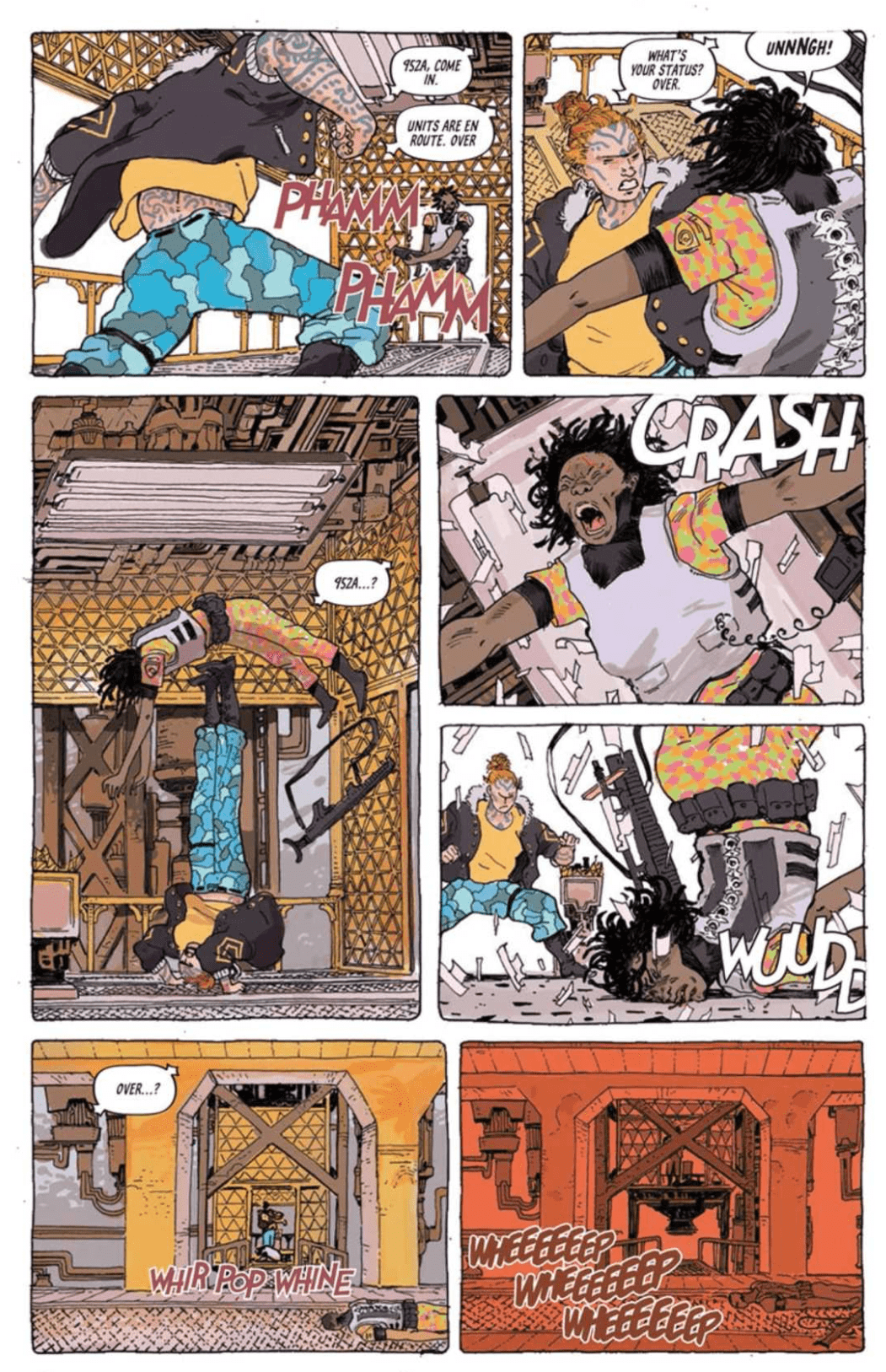The science-fiction tale of a daughter paying for her mother’s sins bursts elegantly to comic shelves February 12th in Image Comics’ newest series, TARTARUS #1.

As Tartarus #1 debuts in February, meaning you still have time to order it. FOC is January 20th, so make sure your local comic shop will have it in stock.
THE FOUNDATION OF TARTARUS
Tartarus’ premiere issue receives the double-sized treatment (44 pages) that sets up the past and the present. Writer, Johnnie Christmas uses this to his advantage by keeping the first half (and some) dedicated to Surka escaping from imprisonment in a deep leveled complex. The amount of pages given to Surka’s side of the story is perfect. We are treated to just how much of a badass she was while showcasing why she was such a feared/wanted criminal. The backstory sets up the reasons why all hell breaks loose when we learn of her daughter, Tilde’s heritage.
Leaving the past Christmas thrusts the reader to where the main story takes place, 17 years later, with Surka’s daughter.
The slow-paced nature and extra pages flesh out the story and world-building greatly. Towards the end of Tartarus #1 it’ll seem as if you’ve read the first volume of a graphic novel trilogy published by Humanoids Publishing. Said feeling can be attributed to multiple facets of Tartarus being reminiscent of The Incal and other European Comics. Story-wise, this is due to the aforementioned slow pace that Christmas uses to build the story up, plus its unique science fiction.
The “foundation” for Tartarus is strong in its freshmen issue with the sense that the creators went deep in the lore to help make the world. Each moment feels calculated and thoroughly thought out with a sense of history between the characters and background waiting to be explored. With the first issue, Christmas introduces some questions that linger, yet answers some. Thus, not making you feel cheated while keeping you wanting more of the world.

PLENTIFUL ART
The European Comic vibe continues with the art, which has a strong Moebius resemblance. Each panel by Jack T. Cole is adorned with thin lines that connect to make a beautiful picture. All of Cole’s backgrounds show an insane amount of detail that tell stories of the world and their devices. Tartarus #1’s pages contain such a vast array of imaginative science fiction devices that make you stare in appreciation at their complexity. Much like Christmas’ writing, Cole’s art does a great deal of fleshing out the world.
Cole’s colors in Tartarus #1’s blend effortlessly with the story and art being told. At times the pages feel as if they were ripped from a 1980’s science fiction palette. When the moment calls for a bright retro feeling, Cole makes sure that the page pops out. Yet, the colors don’t stop at bright and poppy. Cole fills Tartarus #1 with such a vast array of colors that each panel will inflict differing emotions while leaving you enamored in their glory.
Jim Campbell’s letters continue the European Comic atmosphere, yet the style is easier to pin down. The font style mirrors some of Tom Frame’s work on Judge Dredd. Campbell’s lettering is exquisite throughout Tartarus #1, with him heightening the emotion of each scene. As the letters never cover any important detail while helping the reader in some of the more busy parts.

TARTARUS CONCLUSION
When all of Tartarus #1’s elements combine its exaction mirrors a 1980’s European Comic in an alluring manner. This aesthetic may fill the void for some readers, yet equally may not be others cup of tea. Nonetheless, Image Comics and the team behind Tartarus very well have an early “Best of 2020” contender on their hands, and hopefully in yours.
Fun Fact: Johnnie Christmas was the artist for William Gibson’s Alien 3. You can see our review for that here.

